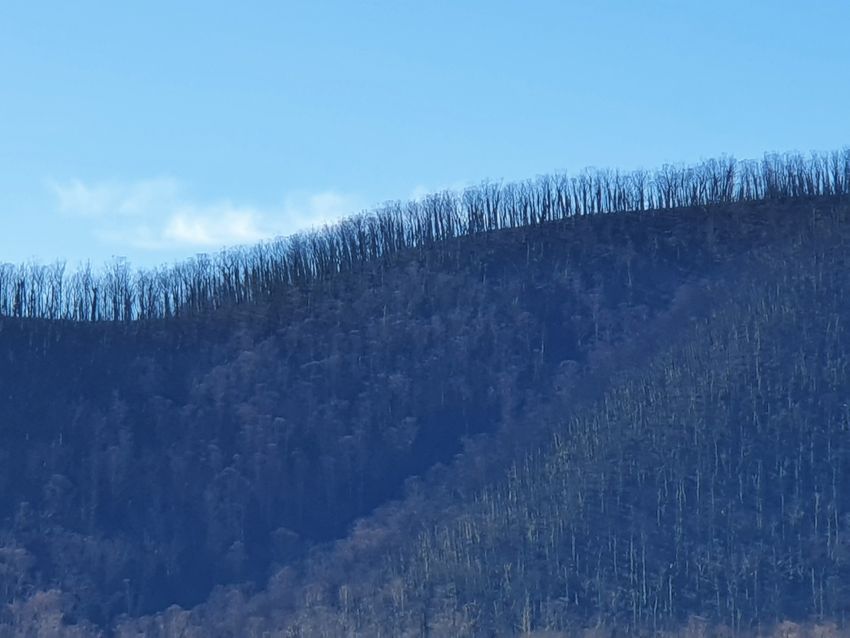
When David Mcevoy last spoke to Green Left in January, he and three friends had barely escaped Cobargo with their lives. He spoke to Green Left about recovering from trauma during COVID-19, and his hopes and fears for the future of the historic town.
It was almost two weeks before Mcevoy could get home. Inconsistencies in advice, patchy telecommunications and misinformation on social media contributed to the fear and confusion. “There was no plan,” he said. “There was no single entity in charge. No one knew what to do.”
Roads were closed, opened then closed again, with police and other agencies unwittingly contradicting each other. They did their best and those fire crews who confronted that monstrous, hellish beast will rightly go down in history as heroes.
But when the fires came, the fault lines of underfunding were laid bare, riven by years of cuts and political neglect.
Like everyone who lived through it, Mcevoy was shell shocked. It was the fire that climate activists had long since warned about. Putting everything on hold, he stayed home alone and tried to process what had happened. He told me he was in a fog for “about two months” avoiding the endless news feed of fire footage and staying off social media.
The memories he had were bad enough. Then his phone started ringing with people asking if he had enough toilet paper? COVID-19 had hit and he didn’t even know.
Mcevoy had been hoping to revisit Cobargo and try to help his friends recover and rebuild their community, but was prevented from doing so by the pandemic. This added to the frustration and feelings of helplessness.
He doesn’t seem convinced the Royal Commission into Natural Disaster Arrangements — final report due the end of October — will do enough to prevent a recurrence. He’s not the only one.
Green Left reported in September that the commission’s interim report agrees better planning is needed and that climate change is resulting in increasingly severe events. It did not address how cutting greenhouse gas emissions would reduce future disasters and no one in government or the opposition wants to talk about it.
Unless the government recognises the basic truth about greenhouse emissions and their true impact, every summer will be hotter, blacker and deadlier than the last.
In an apparent about-face, Bega MP and evacuee Andrew Constance told the Sydney Morning Herald on October 12 that the fires were “predominantly caused by climate change”. He said it should be a “policy priority” to “mitigate climate risk”. However, he failed to challenge his own government’s backing of Santos’ massive coal seam gas project at Narrabri.
While the private owners of major polluters enjoy billions in public funding, there are still people in Cobargo who have endured the entire winter living in caravans and trailers, trying their best to rebuild their homes and community.
A National Bushfire Recovery Agency has been set up and a $448.5 million Local Economic Recovery and Complementary Project Fund created.
A local government grants program offering up to $1 million to impacted local councils is also listed — yet individuals and families are still struggling to find sufficient help.
The longer-term Disaster Allowance made available to individuals and families was far less — the equivalent to their eligibility for Newstart.
Some found the complexity of the various allowance and rebuild program application processes obstructive. What’s more, there is a 66% rejection rate for the low-cost loans scheme.
Nonetheless, and typical of a place like Cobargo, the community itself is working to fill the gaps and look after each other.
As the people, ecosystems and biodiversity in the region struggle to recover, the locals and volunteers are doing amazing work in the face of enormous obstacles.
BlazeAid, the Red Cross, WIRES, Anglicare, local community fundraisers and many volunteers and organisations have been instrumental in helping people and animals across the fire grounds.
There are several business and community-led initiatives under way and the Bega Valley Together project, a Bega Valley Council initiative.
A “Christmas in July” event planned by the Cobargo Tourist and Business Association had to be cancelled due to COVID-19. Undeterred, the locals arranged a “Fire Up Cobargo Festival” which kicked off in September as planned. They are all determined to find a way to recover.
I asked what concerns Mcevoy most about the future for his friends in Cobargo now the town has another fire season looming?
“The myth,” he says, “that because it was so burnt out in January, it can’t burn again”.
There is still significant fuel load in some areas and conditions are again expected to be very hot as greenhouse gas pollution continues to drive temperatures up.
The Bushfire and Natural Hazards Cooperative Research Centre says it can happen again, and its latest report lists the NSW South Coast as being at “elevated risk” for this summer.
The Rural Fire Service is advising locals to remain vigilant and to lay rocks and aggregate around sheds and homes to decrease fire risk. They offer advice on updating fire plans and risk assessments for 2020-2021. Clearly, they know it can burn again, too.
It seems the only ones with their heads in the increasingly hot sands about climate change, are those with vested interests in a taxpayer funded “gas-led” climate disaster.